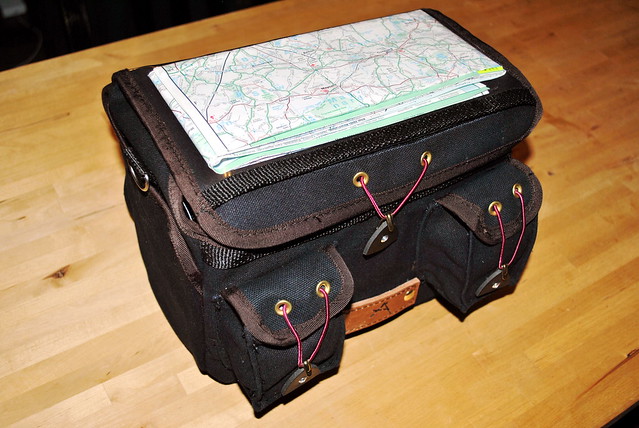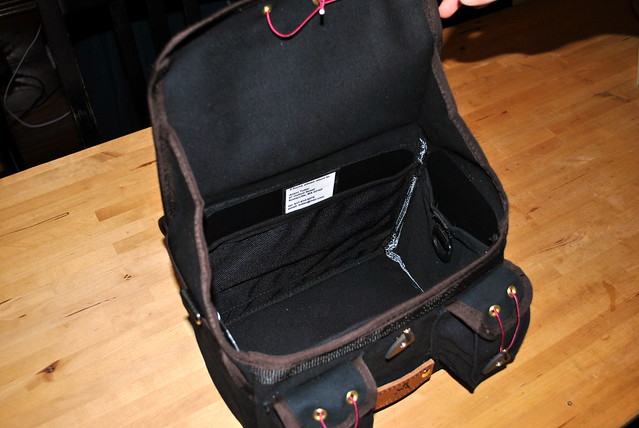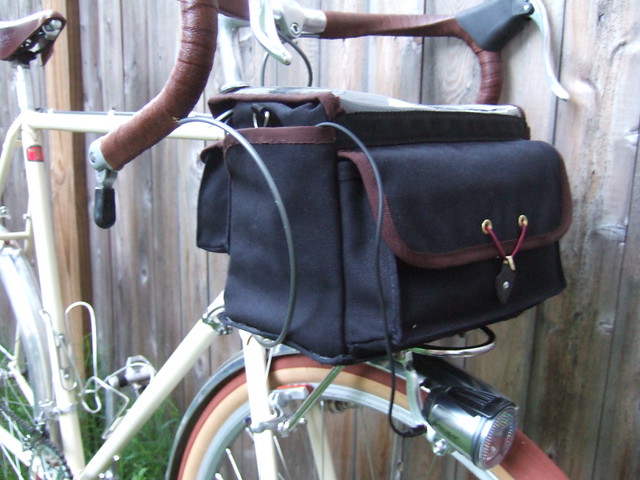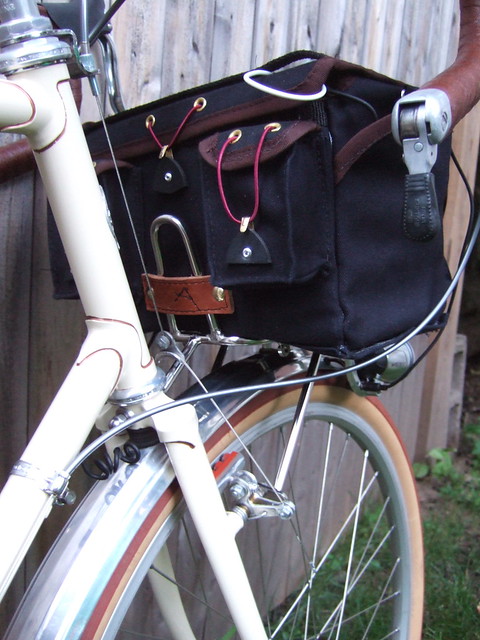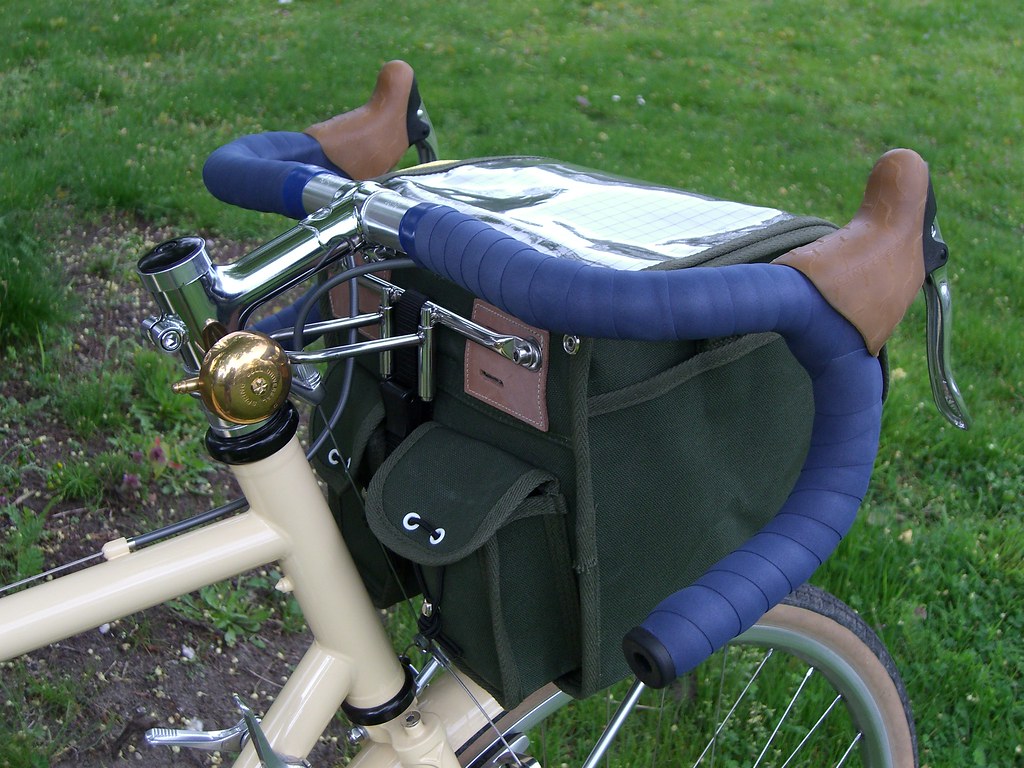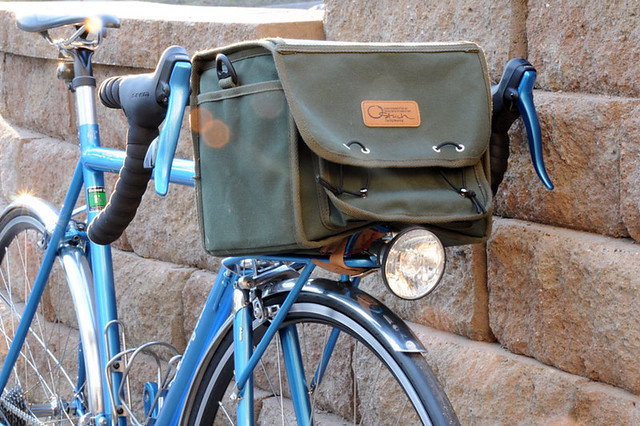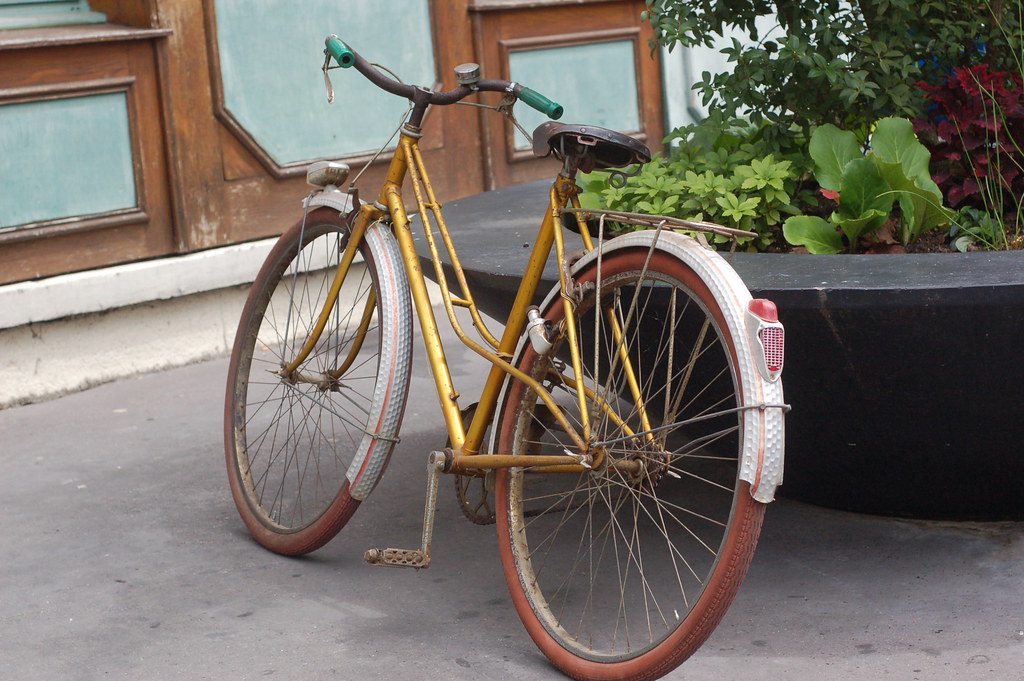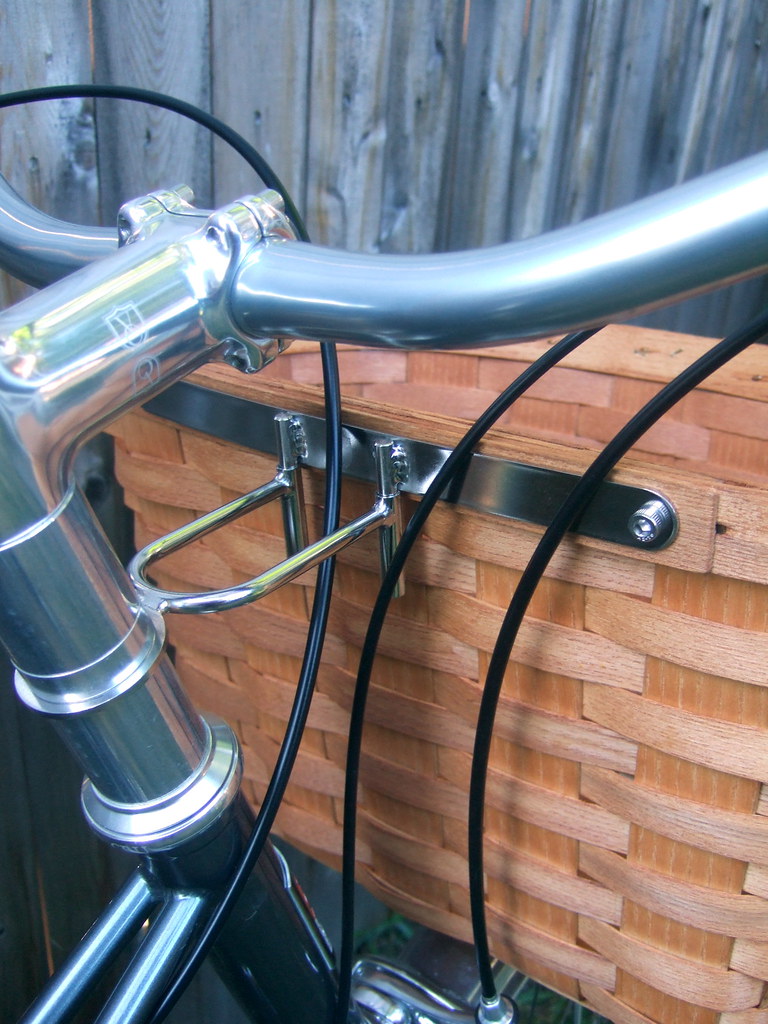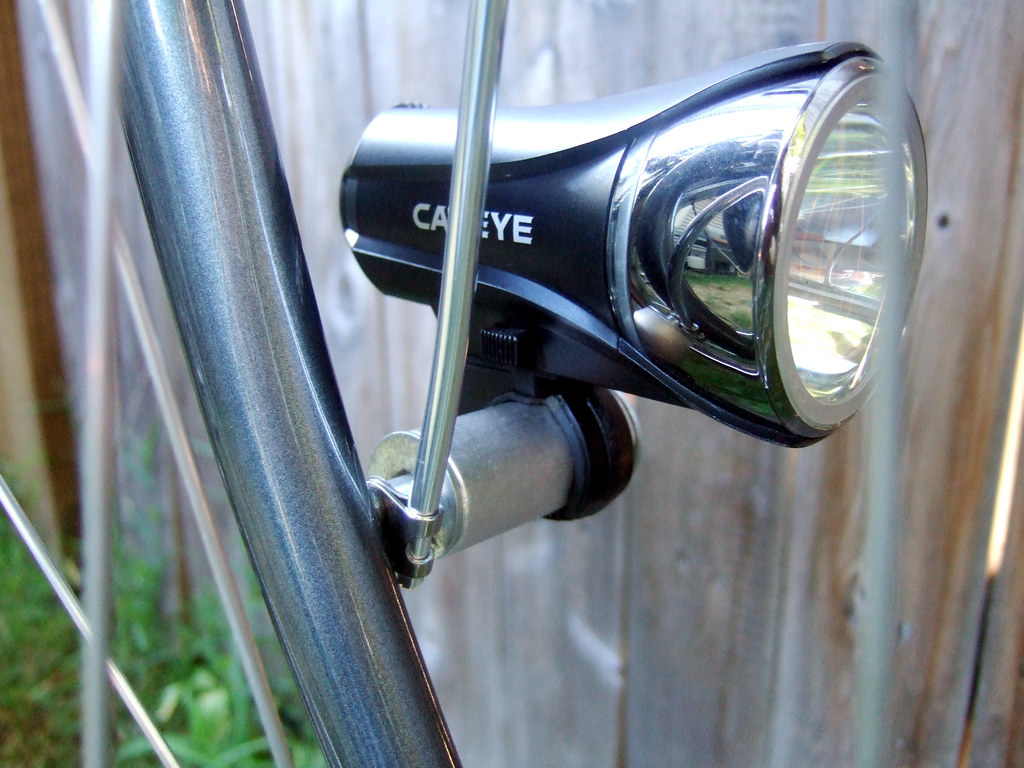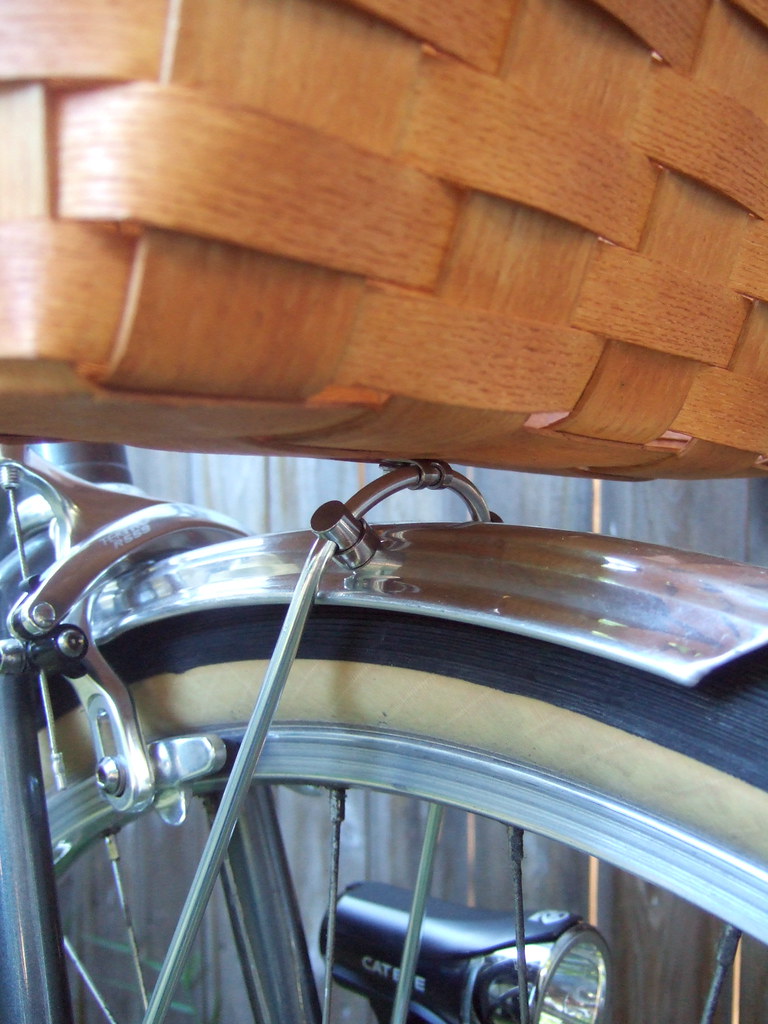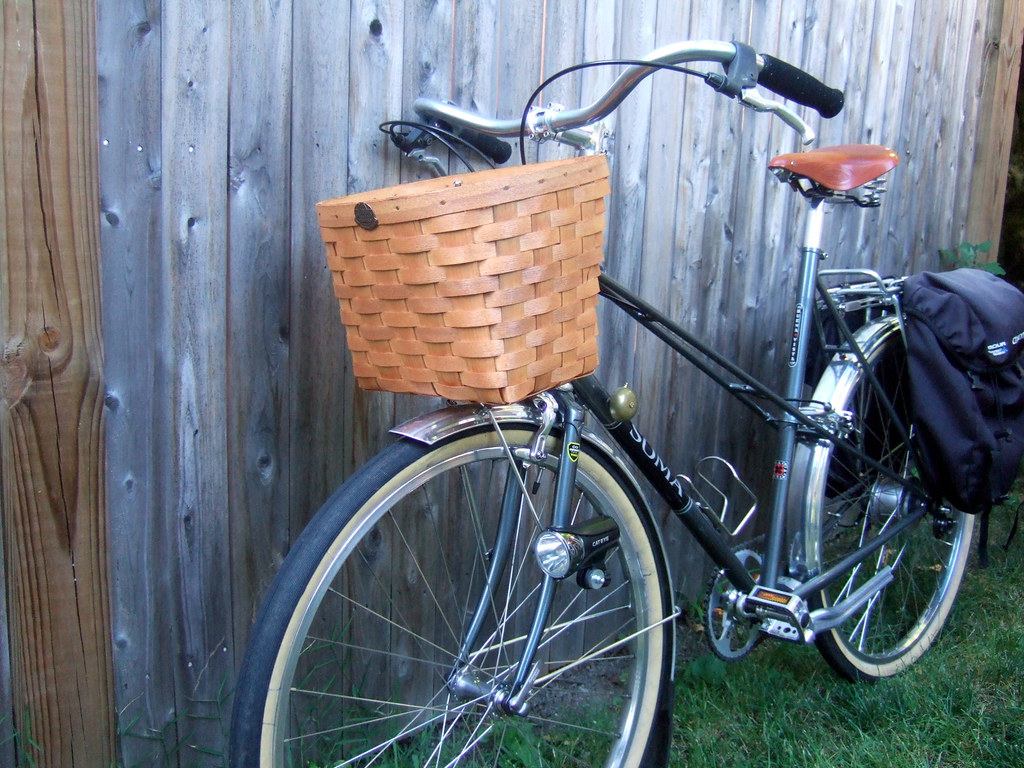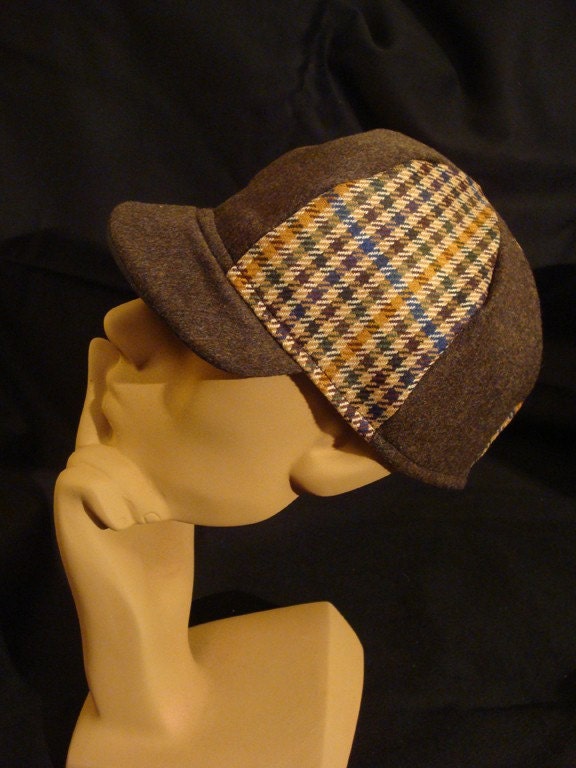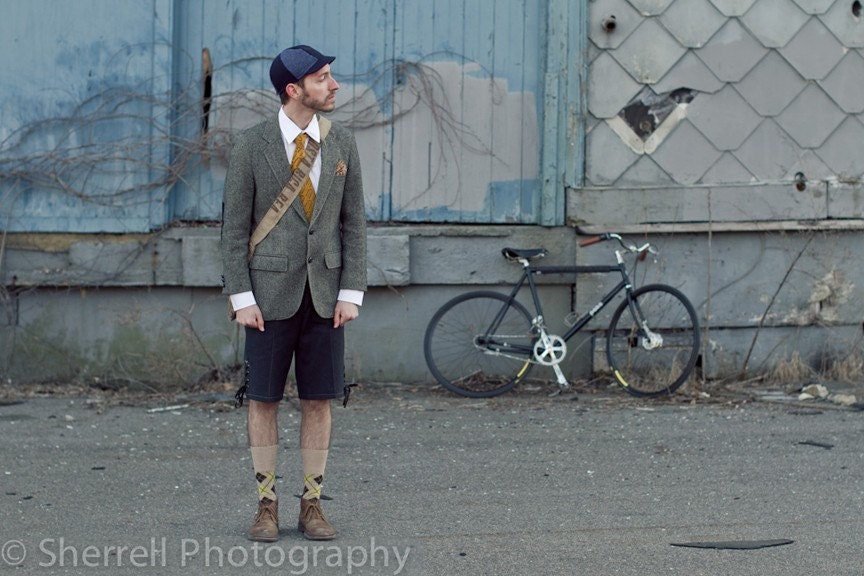A cottage industry of classically styled and constructed bike bags has emerged over the last five or so years, as bikes modeled after classic designs have seen something of a revival. Just a few years ago, few companies other than the old standbys like Carradice and Gilles Berthoud made classically designed bike bags, but recently several small startups have stepped in to satisfy this new niche market. Small artisan operations like Zugster and Acorn have started to gain serious recognition among the bicycle cognoscenti for making high quality, thoughtfully designed bike bags, and there are an increasing number of lesser known startups contributing to this niche market. Most of these gigs are one- or two-person operations, hand-crafting bags in small batches. Often these folks are cyclists themselves who know what the important qualities in a bag are.
I was lucky enough to get in the queue for a new bag by a recent one-man startup. His name is Ely and he recently started making bags for folks on the iBob mailing list. Although new to the scene, he’s already made a bunch of rando bags, saddlebags and panniers (in addition to backpacks, wallets and other hand-stitched accessories), each custom-made to the customer’s specifications. I was able to bounce ideas off of him throughout the design process, which involved lots of email correspondence, and Ely built features into my bag that I thought would be neat to have, but which I had been unable to find in any commercially available offerings.
I wanted a small (~7L), classically styled rando bag with features commonly found on such bags: clear map sleeve on top, pouches facing the rider, elastic closures, etc. Then I threw in some unique ideas (or at least unique to my knowledge): velcro straps on bottom for securing to a rack, internal sleeves for stiffener panels, internal D-loop to hold a keychain, and a few other minor design details. I couldn’t afford a Berthoud– the brand widely regarded as the crème de la crème of this genre, and I could never hit the ‘submit’ button quickly enough whenever a batch of Acorn bags was posted for sale (Acorn bags are so highly sought after that they sell out within seconds of being made available for online order). No one else makes a reasonably priced bag that has everything that I wanted in a bag. So I decided to put my trust in Ely and see what our combined ideas may lead to. He made it clear from the start that he was in the learning phase, and that I shouldn’t expect a bag of Berthoud caliber. In return, he asked only for the cost of materials and shipping, and was appreciative of the trust put in him and for the opportunity to experiment and gain experience making bags. For the cost, I figured it would be a fun experiment: if it were to fail, I would at least have gotten to support a fledgling artisan.
When I received the bag, the first thing that struck me when I began to examine the bag closely was all the time that must have gone into constructing this bag. I think we take it for granted how much time and effort goes into something that has the overall appearance and outward simplicity of a fabric box, and balk at the prices that craftspeople must charge for their wares because we don’t comprehend all that goes into producing them. I can’t begin to imagine the hours measuring, cutting, sewing, punching, riveting, etc that Ely spent crafting this bag. Of course, once you have a template pattern established and you can churn out identical copies of the same article, production becomes more streamlined (and I imagine that this is the only way most established bag makers can price their bags affordably while still earning a profit), but for a completely custom-specified bag, it was humbling to think how much time and labor went into making it.
On to the finished product!
Map sleeve is closed on three sides, and has a velcro closure on the fourth side. It fits a standard folded map, or an 8×11″ cue sheet folded in half. Side D-loops to attach a carry strap. External side sleeves. Two small pouches for cell phone, camera, energy bars, multi-tool, tube, etc. The small pouches snugly fit my camera, but unfortunately they are too small for my iPhone or wallet. Leather strap fits over rack tombstone:
Large front pocket can fit a rain jacket or extra clothing layers:
Internal sleeves on all sides and external sleeve on bottom are ideal for stiffener boards. Vinyl stiffener boards (which I sourced locally after receiving the bag) have been cut to size and added to all sides and bottom (one of my key objectives was to be able to use this bag without a decaleur, necessitating structural fortification with stiffener panels). Top flap opens facing the rider, and has integrated expansion flaps. These fold in when closed, but allow the top flap to bulge past the top of the bag when over-stuffing the bag, without creating a gap between the flap and the rest of the bag. This not only keeps rain out, but also helps prevent things from falling out as they get jostled around the bag. (This was Ely’s idea, and I love it!).
Velcro straps on bottom fit most any front rack:
Bag mounted to bike:
On my first test ride with the bag, which involved dirt roads and bumpy trails, it became clear that the attachment provisions as designed were insufficient. I found that I had to add a small nylon strap (which I brought with me just in case) between the leather sleeve that slides over the tombstone and the bottom of the rack, to keep the back of the bag from lifting when riding over really large bumps. In addition, the velcro straps on bottom couldn’t keep the bag from sliding slightly from side to side on the rack. To be fair, I wouldn’t say the design is defective. Even the best bags wobble around when not supported by a proper decaleur, and I see this on lots of bikes with front bags. And this bag would do fine as-is if ridden on regular roads. But, I wanted something that would stand up to the rough and tumble of washed out dirt roads and fire trails strewn with rocks and branches.
To fortify the attachment without resorting to using a decaleur, I borrowed a trick from renowned frame builder JP Weigle, which is to drill two small holes in the bottom of the bag and use two small nylon R-clips with bolts and wing nuts (Weigle used knurled brass nuts) to secure the bag to the rack. This method keeps the bag firmly planted to the rack, but at the expense of making it a little cumbersome to remove the bag and reattach it to the rack. Since I don’t plan on taking the bag off the bike while on day-long rides, this isn’t a real problem for me, and it beats the extra weight and clunkiness of a decaleur. (A decaleur, on the other hand, provides a convenient quick-release system for people who want to take their bags with them when off the bike). Here’s a rough field photo (literally from a field) showing the supplemental, rock-solid mounting scheme (sorry for the lack of detail in this crop-zoom):

The final test for the bag with the revised attachment method was the D2R2 ride from a couple weeks ago: 74 miles of mostly dirt roads with plenty of bumps. The bag was stuffed, and held on with the two R-clips bolting the bag to the rack up front, and a short strap holding the back end down. The bag held up great, keeping its shape without flopping around or sagging. It kept its contents safely inside, even on the worst bumps. It bobbed up and down slightly when going over bumps as the stiffener panels flexed a bit, but this is expected of most bags, especially without a decaleur.
Here’s the view from the cockpit. Note that while I couldn’t keep my iPhone in one of the small pouches as planned, it fit just fine inside the map sleeve and didn’t obscure the cue sheet. The map sleeve’s velcro closure kept the iPhone safe inside for the entire ride; I wasn’t concerned for a single moment that it might get hurled out, even when descending steep dirt roads at 40 mph (no, I didn’t snap this shot during one of those descents, that would have amounted to suicide):
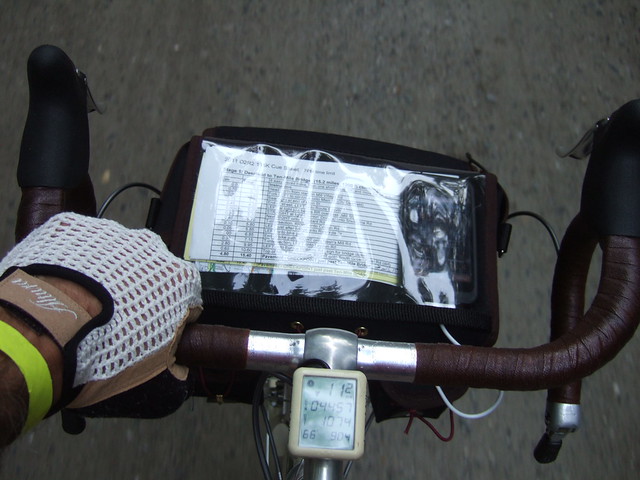
Since the whole process was an experiment (for both Ely and me), it was expected that there would be a few design details that didn’t work out as planned. This has turned out to be the case, but only to a limited extent– the pouches being too small for wallet/iPhone, for example. But that’s nitpicking, and honestly I’m tickled with the bag. Plus, I suspect that Ely is integrating comments he’s getting back “from the field” once his bags have been put to use, so I predict his bags will only get better as he gains experience and feedback. Some of the fine details like the trim stitching may appear less than perfect under close scrutiny compared with, say, a Berthoud or Carradice, and parts of the bag aren’t perfectly symmetrical, but so what? It’s a one-of-a-kind, handmade article! It’s got character, and I think it looks fantastic on my bike. More importantly, the seams appear to be strong. The rivets are reinforced. The bag is not under-built.
I’m also waiting on a small saddle pouch from Ely. I’ll post about that once I’ve gotten it and have had the chance to test it out. Ely has a blog, and can be contacted through there. I have no idea what his current lead time is, nor his current pricing schedule. If you have an idea for your perfect bag, bounce it off him! He’s super nice to correspond with. And, you’d be supporting an independent craftsman and getting a truly unique and custom tailored bicycle accessory!
